- Home
- Joel C. Rosenberg
Inside the Revolution Page 2
Inside the Revolution Read online
Page 2
Alireza Jafarzadeh, Iranian dissident and author of The Iran Threat: President Ahmadinejad and the Coming Nuclear Crisis
Mala Bakhtyar, spokesman for Iraqi president Jalal Talabani
Qubad Talabani, son of Iraqi President Jalal Talabani and the official representative in Washington, D.C., for the Kurdistan Regional Government
Samir Sumaida’ie, Iraq’s ambassador to the United States
Falakaddin Kakaye, Minister of Culture, Kurdistan Regional Government of Iraq
Dr. Ahmed Abaddi, Morocco’s Director of Islamic Affairs
Dr. Ahmed Khamlichi, director of Morocco’s leading Islamic seminary
Khalid Zerouali, Director of Border Security, Morocco’s Interior Ministry
Abdelsalam al-Majali, Prime Minister of Jordan (1993–1995 and 1997–1998)
Benjamin Netanyahu, Prime Minister of Israel (1996–1999)
General Moshe Ya’alon, Chief of Staff of the Israeli Defense Forces (2002–2005)
Dore Gold, Israeli ambassador to the United Nations (1997–1999) and senior advisor to Prime Minister Ariel Sharon (2001–2003)
Hormoz Shariat, member of the Iranian Revolution in 1979 who later converted to Christianity, set up a satellite television ministry, and is now one of the best-known evangelists in Iran
Taysir Saada, former Palestinian terrorist who converted to Christianity and now runs an evangelical ministry called Hope for Ishmael
Over 150 Arab and Iranian pastors and ministry leaders, including former Islamic jihadists who have converted to Christianity
Dozens of Arab and Iranian prodemocracy dissidents
Western and Middle Eastern intelligence officials, both active and retired
Western and Middle Eastern diplomats, both active and retired
Some of these spoke to me specifically for Inside the Revolution. Others spoke to me for other books and articles I have written over the years. As with my previous nonfiction book, Epicenter, I should note that not all of these sources will agree with the analysis and conclusions found in the pages ahead, but I am exceedingly grateful for their valuable time and helpful insights. I have no doubt this book is richer for the assistance they provided.
A Final Note
Before you begin your journey inside the Revolution, allow me to briefly describe three other groups of people that are important to our story. They do not receive much direct attention in this book as they are not in and of themselves Revolutionaries. But at least a cursory awareness of who these groups are and how they fit into the overall picture is vital, I believe, in understanding the broader context of the current dynamics in the Middle East. I speak here of groups I call the “Resisters,” the “Reticent,” and the “Rank-and-File.”
The Resisters are leaders of Muslim-majority countries who show little evidence of wanting serious social or ideological change of any kind. While Muslim themselves, they do not want the kind of fundamental, sweeping changes advocated by the Radicals, Reformers, or Revivalists. To the contrary, they resist change; generally speaking, their mission is to hold power for as long as possible.
Most modern Arab regimes fall into this category. The royal family and senior leaders of Saudi Arabia are classic Resisters. As Sunni Wahhabi Muslims, some may theologically identify with the Radicals, but they part paths politically. Some of their schools are certainly producing a new generation of extremists, and their oil wealth often funds groups of Radicals, but the House of Saud wants to remain in political power and wants to retain the enormous revenues that come from selling oil to the West and the East. Thus Saudi leaders try to remain vigilant so as not to let Radicals take over their kingdom. They do not want a revolution on the Arabian peninsula. Nor do they want Osama bin Laden, himself a Saudi, and his al Qaeda movement to destroy the West and establish a global caliphate. Moreover, they are absolutely terrified by the notion that Iranian Shia Muslims will attempt to blow up the world to hasten the coming of the Mahdi—an eschatology they as Sunnis do not share. So they maintain close ties to the U.S. and the European Union and pursue geopolitical stability at almost all costs.
President Hosni Mubarak of Egypt—nominally a Muslim but more of a secular Arab nationalist at heart—is also a classic Resister. His predecessor, Anwar Sadat, was the region’s first bold Reformer: a Muslim who made peace with the Israelis, broke with the Soviets, and embraced the United States. But he was assassinated by Radicals for his efforts, and Mubarak never forgot that. Mubarak was Egypt’s vice president at the time and was sitting next to Sadat the day he was killed. Mubarak has never appointed another vice president and has resisted fundamental changes in Egypt of almost any kind ever since.
Other Resisters tend to be secular Arab nationalists as well, not interested in creating a Radical Islamic caliphate, though they certainly want to rule as dictators and seize as much wealth, power, and territory as they can. At times they align themselves with Radicals if they think they can gain material or territorial advantages in the process. But they are not “true believers.” Indeed, they are just as likely to round up and kill or imprison Radicals as join forces with them. It often depends on their mood and their sense of self-interest. Resisters also tend to imprison, torture, and sometimes execute Reformers and Revivalists because, in their view, change is dangerous. Stability is all-important. Syria’s Bashar al-Assad is a classic Resister. So is Libya’s Moammar Ghaddafi, along with the leaders of Algeria and Tunisia.
The Reticent include leaders of Muslim-majority countries or territories who have leanings toward one movement or another but have not fully committed. They do the two-step, dancing for a season with one partner, then shifting to another.
Palestinian chairman Mahmoud Abbas is, in many ways, a charter member of the Reticent. Once the number-two man next to Yasser Arafat, he wrote his doctoral dissertation denying the Holocaust. He is a Sunni Muslim but has operated historically much more like a secular Arab nationalist and even like a Marxist. Since rising to power in the wake of Arafat’s death, however, Abbas has shown some small but noteworthy signs of shifting away from Arafat’s worldview and toward actually wanting to make peace with Israel through a two-state solution. But he is politically weak. He is surrounded by Radicals and Resisters. The jihadists of Hamas have seized control of Gaza—fully a third of his territorial “kingdom”—and threatened to assassinate him, his family, and everyone else he knows if he makes peace with Israel or embraces true democratic reforms in the West Bank. So he dances.
Pakistani president Pervez Musharraf was also a member of the Reticent, until he resigned his post in August 2008. Before 9/11, Musharraf’s intelligence services helped build and strengthen the extremist Taliban government in Afghanistan. But after 9/11, to his credit, Musharraf made a significant course correction. Unfortunately, he made little effort or progress to clean up Pakistan’s rampant corruption problems. But in other ways he did begin remaking himself as a Reformer, however imperfect. He became an important and useful ally in the war against the Radicals, directing his security forces to hunt down and arrest hundreds of terrorists and extremist leaders, including Khalid Sheikh Mohammed, the mastermind of the 9/11 attacks, and Dr. A. Q. Khan, the father of Pakistan’s nuclear weapons program, who would later confess to selling blueprints, equipment, and technical advice to Iran, Libya, and North Korea to help them develop their nuclear weapons programs. He took steps to protect the Pakistani Christian community from jihadist attacks and even reached out to Israel, once shaking Prime Minister Ariel Sharon’s hand at the United Nations and delivering a major address to a gathering of the American Jewish Congress in New York in 2005. It was no wonder, then, that al Qaeda and other Radical groups tried to assassinate him so many times.
The Rank-and-File, finally, comprise the vast majority of the world’s 1.3 billion Muslims. They do not run countries. Individually, they generally have little or no wealth or power. But they are enormously important. First, they are souls created in God’s image. Second, they are suffering. As I will
detail later in the book, many live in absolute, destitute poverty and see no future and no hope for their lives, their children’s lives, or their grandchildren’s lives. Third, they are searching. They want a better life. They know their nations and their regions are failing. But they are not sure which way to turn.
When it comes to the social, economic, and spiritual crises plaguing the Islamic world, the Rank-and-File wonder, Who has the right diagnosis? Who has the right prognosis? Are the Radicals right in teaching that a purer form of Islam is the answer and that violent jihad is the way? Are the Reformers right in thinking that Islam is good but that more freedom, openness, and democracy are the way forward? Or are the Revivalists right, that Islam is not the answer, that Jesus is the answer, and that only by accepting Christ’s death on the cross and resurrection from the dead can a person be forgiven and saved and filled with hope and joy here in this life and in the life to come?
The Rank-and-File represent the vast middle ground of the Muslim world. They are going about their day-to-day lives without much of a desire to be Revolutionaries of any kind. But they are the audience to which the Radicals, the Reformers, and the Revivalists are speaking. If any of these three major movements ever gains the majority—or even a working plurality—of the Rank-and-File, the entire world will be forever changed, for good or ill.
Understanding these three Revolutionary movements—including the crises they are responding to and the answers they are offering—is of absolutely critical importance. Those who ignore these trends do so at their peril.
Joel C. Rosenberg
Washington, D.C.
November 11, 2008
Chapter One
Worst-Case Scenario
My conversation with the former commander of Delta Force
I first met him at the Pentagon in February 2007.
At the time, William G. “Jerry” Boykin was a three-star lieutenant general in the United States Army, serving as deputy undersecretary of defense for intelligence. As such, he was responsible for overseeing the gathering and analysis of all military intelligence related to the global War on Terror. He had read my first nonfiction book, Epicenter: Why the Current Rumblings in the Middle East Will Change Your World, and had invited my wife, Lynn, and me for lunch to discuss my research and conclusions.
After taking us and some mutual friends on a tour of the Pentagon and showing us the memorial chapel where Flight 77 hit on 9/11, General Boykin took us to a private dining room where we began to chat. We talked about his family and his years in the military. We talked about his thoughts on the ongoing battles in Iraq and Afghanistan and about the rising Iranian nuclear threat. He asked me about my assessment of Iranian president Mahmoud Ahmadinejad and why I believed the president’s Shia eschatology, or end times theology, was driving Iranian foreign policy. It was not a subject that was being discussed much inside the Pentagon’s higher echelons at the time, and he was curious. It was the beginning of a friendship that would soon deepen between our two families.
Few men I have ever met in Washington understand the mind-set and mission of the Radicals better than Boykin. He has, after all, been hunting Radicals for nearly thirty years, and his firsthand knowledge and insight were invaluable.
Two Propaganda Windfalls . . . and a Third
When the Iranian Revolution erupted in 1979, Boykin was a thirty-one-year-old commando training with the U.S. Army’s newly formed and highly classified counterterrorism team known as Delta Force. In November of that year, Radicals seized the American Embassy in Tehran and took dozens of American diplomats and Marines hostage. Boykin and his boss, Col. Charlie Beckwith, the legendary Delta commander, were ordered to the Pentagon. There they were briefed on the latest intelligence and began planning a rescue.
This was America’s first direct confrontation with Radical Islamic jihadists. No one in Washington had ever encountered a crisis quite like this. In the months that followed, Boykin and his colleagues studied everything they could find on the Ayatollah Khomeini, the nature and loyalty of his followers, the students that had stormed the embassy compound, and the religious and political beliefs that drove them to wage jihad against the West. When President Carter finally ordered the rescue of the hostages, Boykin was one of the Delta team leaders penetrating Iranian airspace in the dark of night. The mission, as I will detail in a later chapter, was a disaster, not simply due to failures of equipment and human error, but because it emboldened the Radicals and gave them a sense of divine choosing and invincibility.
“I’ll say two things, Joel,” Boykin told me when we sat down for a formal interview in the winter of 2008, several months after he retired from the Army. “First of all, that failed rescue attempt was the greatest professional disappointment of my thirty-six-plus years in the military. In our view, we had not only failed the fifty-three Americans in the embassy, we’d failed the nation. And it was a tremendous burden that we all still carry today. But the second thing is that the hostage crisis was the beginning of our focus on the Islamic Revolution. That was when we really started paying attention to what was happening among the Radical jihadists.”2
“What was the impact of that failure?” I asked Boykin.
“If you stop and think about it, that was one of the two most significant propaganda windfalls in Radical Islam’s recent history,” he replied. “The fact of the matter is the jihadists were able to say with some credibility to the rest of the Islamic world, ‘We have just defeated the Great Satan. We held their hostages for 444 days, and they were inept. Allah has shown us favor. Allah is with us.’”
“What was the second?” I asked.
“The second was when the Russians left Afghanistan and went home defeated, and the Soviet Union disintegrated,” Boykin replied immediately. “Now, Osama bin Laden used that for propaganda purposes. He said, ‘We have defeated the world’s great infidel power. Now the effeminate Americans will be easy.’”
The combination of those two events, Boykin told me, became the greatest recruiting tool in the history of the Radicals and dramatically swelled their ranks in the years to come.
I noted that there was a third event that aided the growth of the Radicals: Hezbollah’s suicide truck bombing attack against the Marine barracks in Beirut, Lebanon, in 1983.
Boykin agreed. “That was a devastating day for America when they killed our Marines at the barracks,” he said, noting that before 1983, U.S. forces had never encountered a suicide bombing. “People who would blow themselves up? This was something we didn’t understand.”
The incident was horrifying for the entire Marine Corps and specifically for the families of the men who were directly involved. But compounding the disaster, the Reagan administration chose to cut and run, pulling all U.S. military forces out of Lebanon.
“The great tragedy of that whole thing geopolitically,” Boykin argued, “is that we immediately withdrew our forces. What did that say? What did it say to the Islamists? What did it say to the extremists? It made them think, ‘We won; you lost.’ And they were able to make that point with some credibility. After all, they blew up our Marines, we withdrew, and Beirut was back in their hands.”
“We Have a Black Hawk Down”
Ten years later, Boykin again found himself at the vortex of a battle between the U.S. and Radical Islam, which became yet another propaganda windfall for the Radicals. The time: August 1993. The location: Mogadishu, Somalia. The enemy: the jihadist militia run by Somalian warlord Mohammed Farrah Aidid, supported by al Qaeda jihadists, financed and trained by none other than Osama bin Laden.
“Almost 4.5 million people, more than half the total number in the country, were threatened with starvation, severe malnutrition, and related diseases,” reported a U.N. assessment team. “The magnitude of suffering was immense. Overall, an estimated 300,000 people, including many children, died. Some two million people, violently displaced from their home areas, fled either to neighboring countries or elsewhere within Somalia. All institutions of
governance and at least 60 percent of the country’s basic infrastructure disintegrated.”3
At the order of President Bill Clinton, U.S. special forces were sent to capture General Aidid and stop the bloodletting. This time, Boykin was no longer just a member of the Army’s most elite fighting force. He was now the Delta Force commander, and he was horrified by what he found.
“We went into Mogadishu not fully realizing the difficulty of our task,” Boykin explained. “Given that this was a lawless society, this was anarchy in its purest form—it was nothing but sectarian violence, clan against clan. And they were all, in one form or another, extremists—Islamic extremists. They were doing things that were alien to us. They were using unarmed women as shields as they would approach our positions. When we would go into certain facilities, they would throw their children up in front of them as a shield. It is difficult for us as Americans to understand that kind of mentality.”
On October 3, U.S. forces received intelligence that a small group of Aidid’s closest associates were having a meeting in an area called the Bakara Market, euphemistically known as the “Black Sea.” It was known to be the most violent part of the Somalian capital, and one that Boykin and his men had not gone into previously. “In a situation like that, you don’t choose your locations; the people you’re after do,” Boykin told me. “The intelligence was credible. We knew they were there. We were expecting about half a dozen of them. So we went in.”
Major General Bill Garrison was responsible for the overall operations of Task Force Ranger, as well as for coordinating U.S. strategy with the U.N. forces. Boykin had the specific tactical responsibilities for going after the targets in Mogadishu.
“We made our assault, captured roughly twenty-one people, and then loaded them on trucks and started back to our base to bring them in for interrogation,” Boykin recalled. “As we were trying to get out of the city, one of our helicopters was shot down, and it changed everything.”

 The Copper Scroll
The Copper Scroll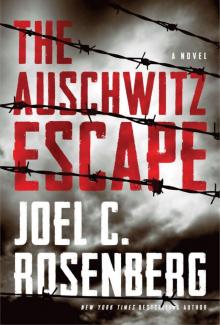 The Auschwitz Escape
The Auschwitz Escape The Last Jihad
The Last Jihad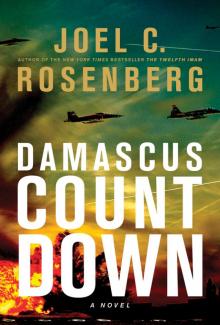 Damascus Countdown
Damascus Countdown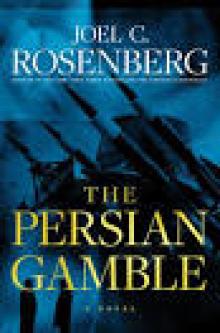 The Persian Gamble
The Persian Gamble The Jerusalem Assassin
The Jerusalem Assassin Dead Heat
Dead Heat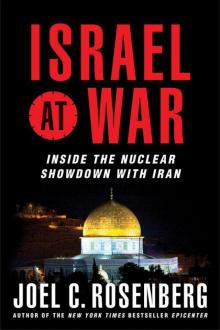 Israel at War: Inside the Nuclear Showdown With Iran
Israel at War: Inside the Nuclear Showdown With Iran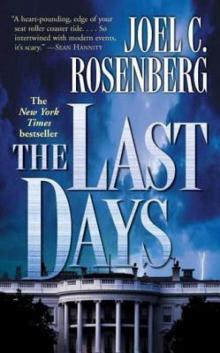 The Last Days
The Last Days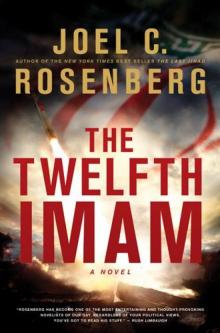 The Twelfth Imam
The Twelfth Imam Epicenter 2.0
Epicenter 2.0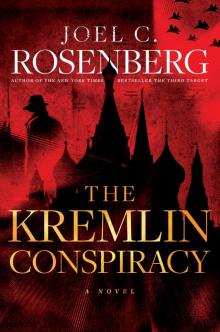 The Kremlin Conspiracy
The Kremlin Conspiracy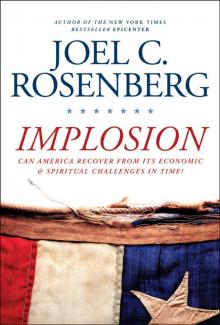 Implosion: Can America Recover From Its Economic and Spiritual Challenges in Time?
Implosion: Can America Recover From Its Economic and Spiritual Challenges in Time? The Third Target: A J. B. Collins Novel
The Third Target: A J. B. Collins Novel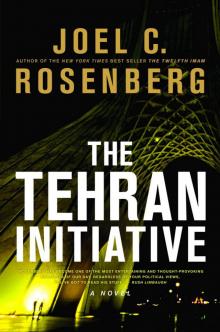 The Tehran Initiative
The Tehran Initiative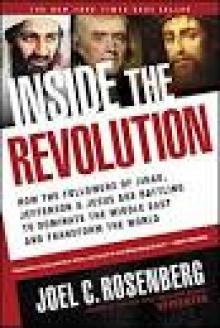 Inside the Revolution
Inside the Revolution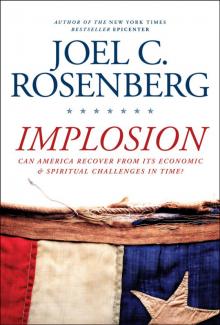 Implosion
Implosion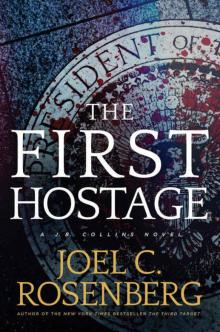 The First Hostage: A J. B. Collins Novel
The First Hostage: A J. B. Collins Novel